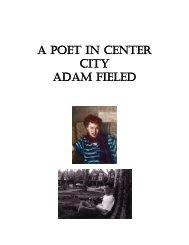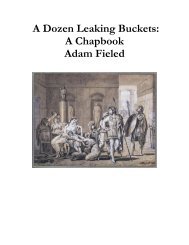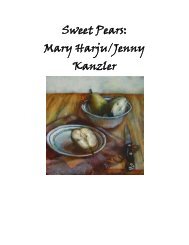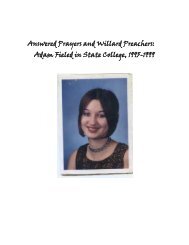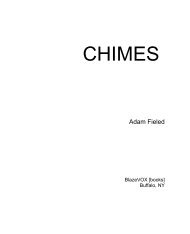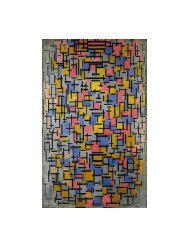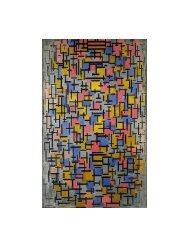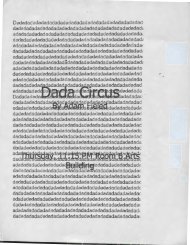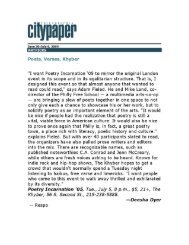Our Architecture Did This To Us: Neo-Romanticism
This collection of essays, by American poet Adam Fieled, addresses the development of Neo-Romantic art in Aughts Philadelphia, during the years of the Philadelphia Renaissance.
This collection of essays, by American poet Adam Fieled, addresses the development of Neo-Romantic art in Aughts Philadelphia, during the years of the Philadelphia Renaissance.
You also want an ePaper? Increase the reach of your titles
YUMPU automatically turns print PDFs into web optimized ePapers that Google loves.
end— superior formal rigor and narrative-thematic gravitas inhering in<br />
the art, influenced by the sublimity of Philadelphia’s architecture and the<br />
sense of Philadelphia (also) as haunted, spectral, apparitional. The major<br />
<strong>Neo</strong>-Romantic seeds, I would venture to say, have already been planted.<br />
I will tend the garden for as long as I have the capability of doing so.<br />
What I would encourage others to do, who like <strong>Neo</strong>-Romantic art, is to<br />
use us as a template, but (please) be willing to acknowledge our<br />
influence. No one likes to feel ripped off, and rip-offs (these days) are<br />
Regular.<br />
<strong>Neo</strong>-Romantic art makes a bunch of assumptions which are worth<br />
discussing. That there is a tie in serious art between formal beauty and<br />
individuality which is worth cultivating, and that was largely eschewed<br />
by twentieth century art; that formality itself is expressive, above and<br />
beyond the conceptual; and that the conceptual basis for the<br />
development of forms has to do with Solid World attachment to the<br />
Irregular and to the sense that Regularity necessitates homogeneity of<br />
forms and themes by guaranteeing material rewards to imposters and<br />
conformists. Aughts Philadelphia was, in general, not a rewarding<br />
place/context for conformists. Yet, it will take some time for us to be a<br />
straightforward, Regular “buzz.” Warhol in the 60s and 70s, for example,<br />
was not particularly like that; he “buzzed” plenty in his own time; yet,<br />
the whole point of his work is built-in obsolescence, which assures his<br />
oeuvre no future at all in a century which values individualism and the<br />
Solid. If you are interested in <strong>Neo</strong>-<strong>Romanticism</strong>, please prepare yourself<br />
for a long, rewarding ride. Not only that— that we embraced form as<br />
perhaps the most serious mode of aesthetic individuality means that<br />
those with sufficient brains will never find leave to be embarrassed with<br />
us. The spine of our body of work is set sturdily and securely in place. As<br />
in <strong>Romanticism</strong> and <strong>Neo</strong>-Classicism, the multi-dimensional aspect of<br />
myself and Abby— that there is strong narrative-thematic material to<br />
enhance, gird, and reinforce the formal, manifesting an ideal of the work<br />
of art as well-rounded and Solid— can only intermittently interest the<br />
Regular world, ever. When was the last time you saw the name John<br />
Keats in the New York Times or the New Yorker, or, for that matter, The<br />
Philadelphia Inquirer? The Solid World is always in the process of<br />
building and rebuilding itself, and re-inventing its own architecture. If<br />
what the Regular World has in store for us is scripted respect backed<br />
with distance and mistrust, who cares? The reason to create (ultimately)<br />
is that you want to create, and you can; and this axiomatic assumption<br />
undergirds not only <strong>Neo</strong>-<strong>Romanticism</strong>, <strong>Romanticism</strong>, and <strong>Neo</strong>-







